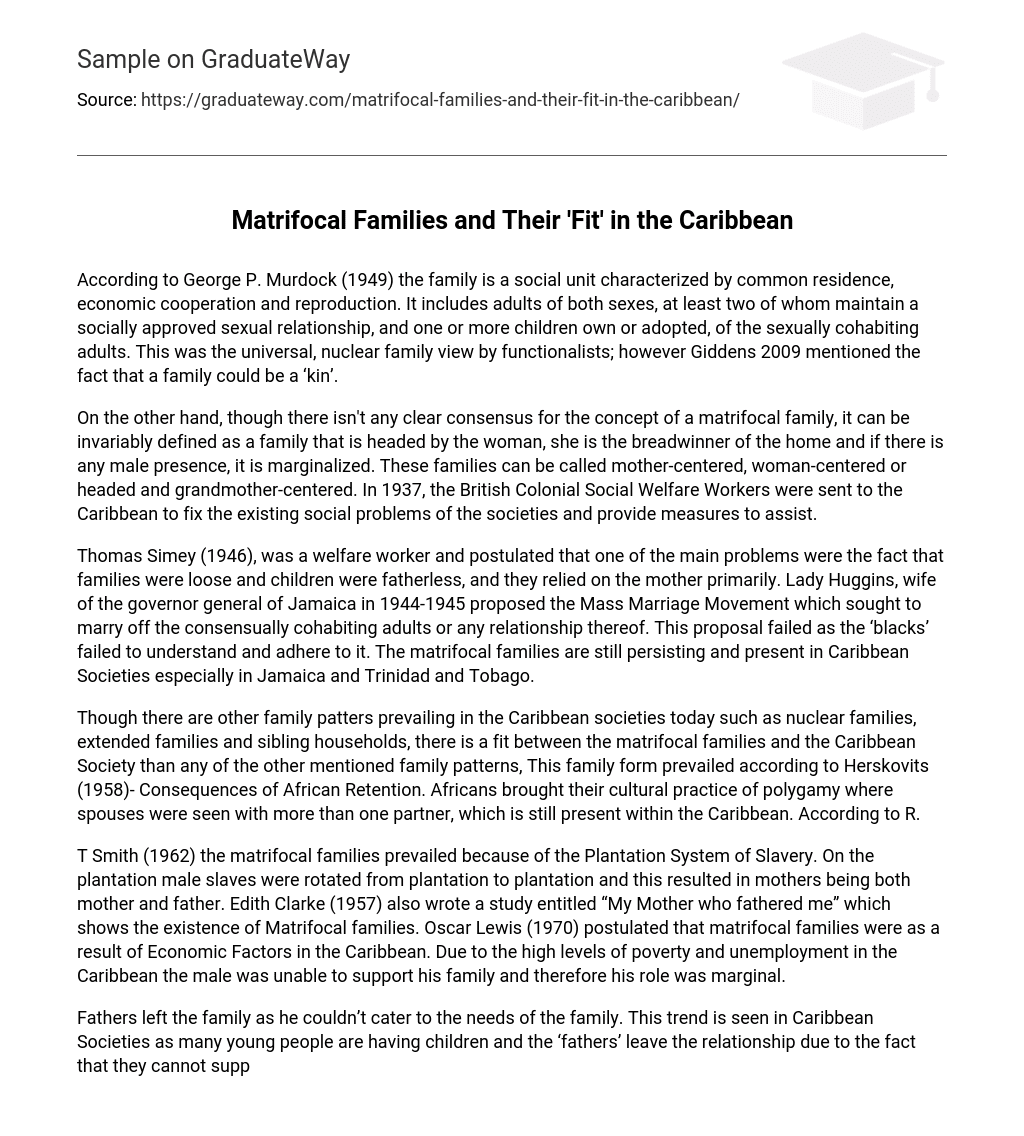According to George P. Murdock (1949) the family is a social unit characterized by common residence, economic cooperation and reproduction. It includes adults of both sexes, at least two of whom maintain a socially approved sexual relationship, and one or more children own or adopted, of the sexually cohabiting adults. This was the universal, nuclear family view by functionalists; however Giddens 2009 mentioned the fact that a family could be a ‘kin’.
On the other hand, though there isn’t any clear consensus for the concept of a matrifocal family, it can be invariably defined as a family that is headed by the woman, she is the breadwinner of the home and if there is any male presence, it is marginalized. These families can be called mother-centered, woman-centered or headed and grandmother-centered. In 1937, the British Colonial Social Welfare Workers were sent to the Caribbean to fix the existing social problems of the societies and provide measures to assist.
Thomas Simey (1946), was a welfare worker and postulated that one of the main problems were the fact that families were loose and children were fatherless, and they relied on the mother primarily. Lady Huggins, wife of the governor general of Jamaica in 1944-1945 proposed the Mass Marriage Movement which sought to marry off the consensually cohabiting adults or any relationship thereof. This proposal failed as the ‘blacks’ failed to understand and adhere to it. The matrifocal families are still persisting and present in Caribbean Societies especially in Jamaica and Trinidad and Tobago.
Though there are other family patters prevailing in the Caribbean societies today such as nuclear families, extended families and sibling households, there is a fit between the matrifocal families and the Caribbean Society than any of the other mentioned family patterns, This family form prevailed according to Herskovits (1958)- Consequences of African Retention. Africans brought their cultural practice of polygamy where spouses were seen with more than one partner, which is still present within the Caribbean. According to R.
T Smith (1962) the matrifocal families prevailed because of the Plantation System of Slavery. On the plantation male slaves were rotated from plantation to plantation and this resulted in mothers being both mother and father. Edith Clarke (1957) also wrote a study entitled “My Mother who fathered me” which shows the existence of Matrifocal families. Oscar Lewis (1970) postulated that matrifocal families were as a result of Economic Factors in the Caribbean. Due to the high levels of poverty and unemployment in the Caribbean the male was unable to support his family and therefore his role was marginal.
Fathers left the family as he couldn’t cater to the needs of the family. This trend is seen in Caribbean Societies as many young people are having children and the ‘fathers’ leave the relationship due to the fact that they cannot support the child, which leave the mother alone to be both the mother and father to the child/children. Gonzales (1970) demonstrated how matrifocal families operated when he studied a Garifuna Tribe. He illustrated that the children of the mother spent more time with her parents and her side of the family rather than the father’s parents.
Children were seen to develop stronger bonds with the mother than father. The mother was seen as the nurturer and the disciplinarian to the children. Though modernization contributed to an extent to the formation of the nuclear family structure, the matrifocal family type is still evident in Caribbean Societies as they were impacted strongly by historical factors such as Slavery. Matrifocal families were seen as dysfunctional and disorganised and still are becoming a major trend in modern societies.





